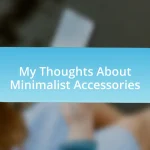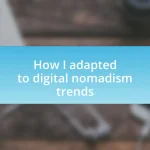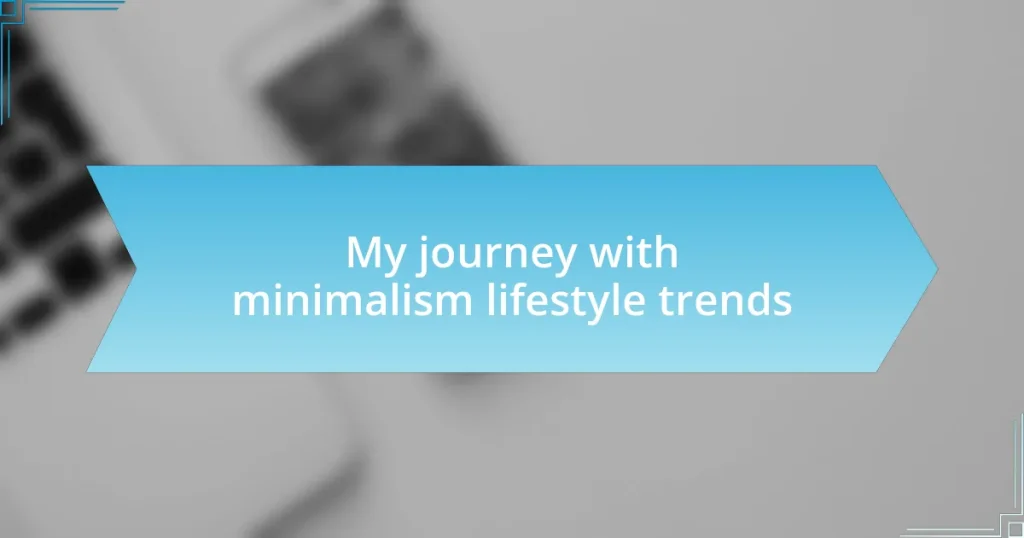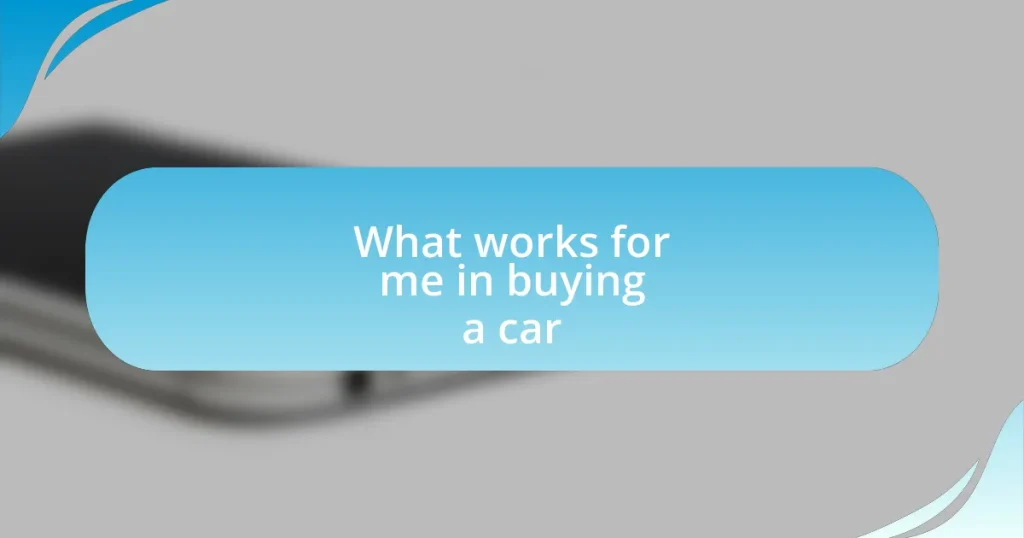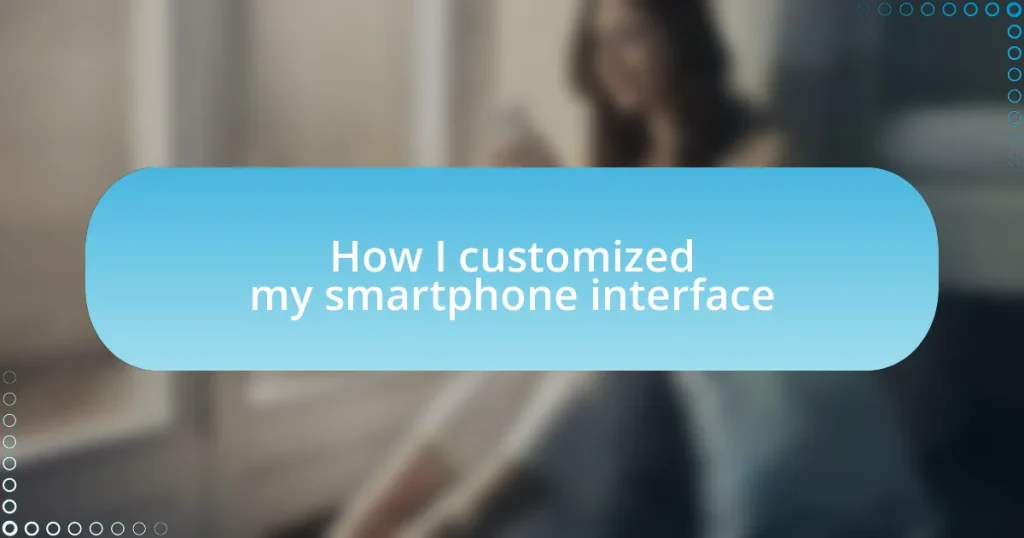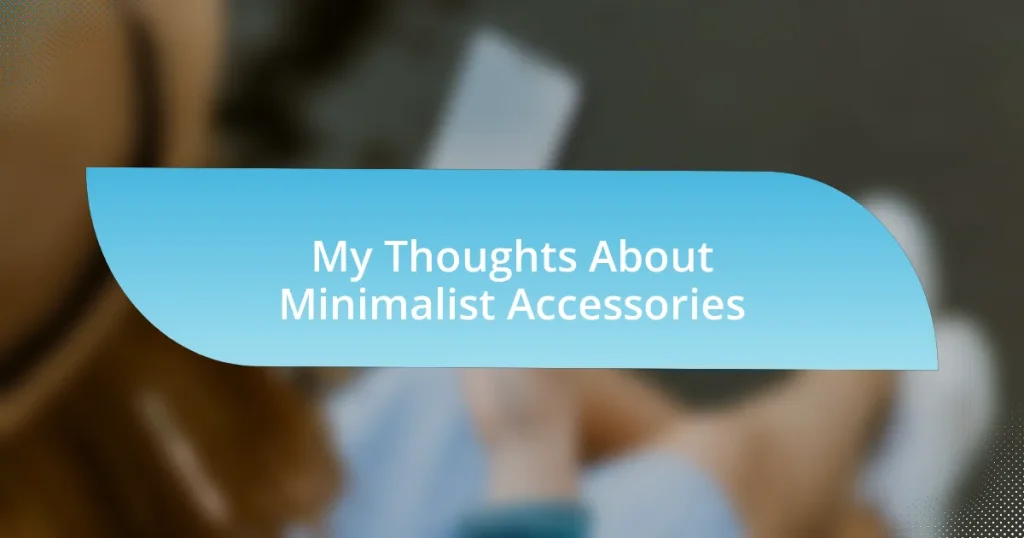Key takeaways:
- Minimalism emphasizes valuing experiences over possessions, leading to emotional clarity and freedom.
- The practice encourages mindful consumption, focusing on quality over quantity and sustainable choices.
- Decluttering creates not only physical space but also emotional relief, enhancing mental well-being.
- Long-term benefits of minimalism include reduced stress, financial freedom, and deeper relationships through meaningful experiences.
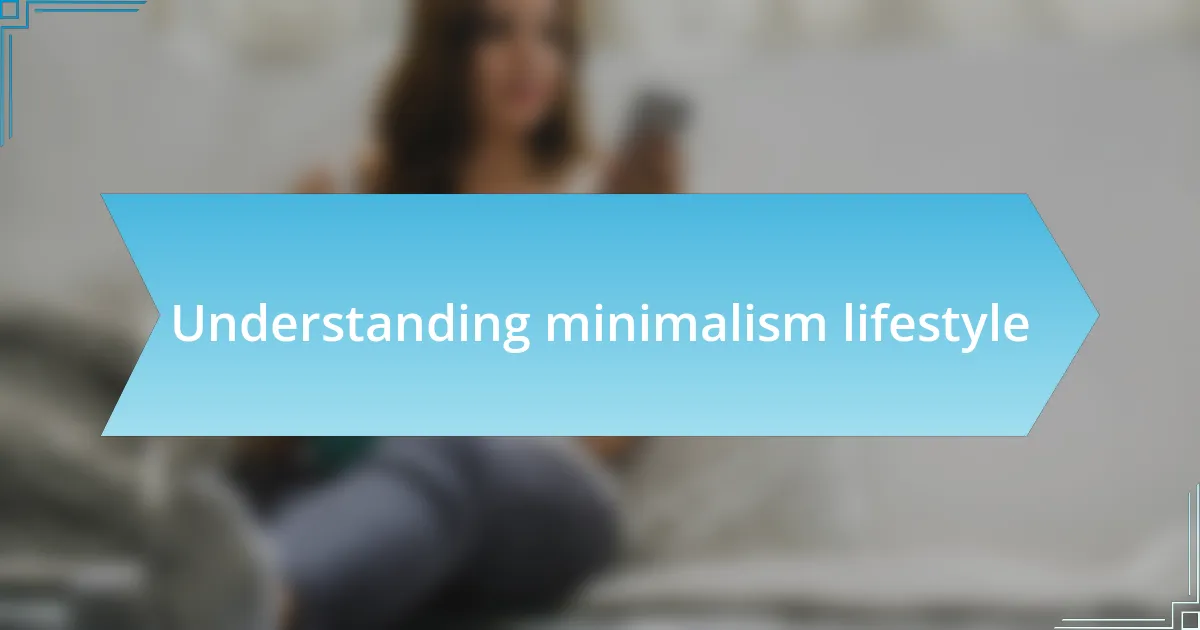
Understanding minimalism lifestyle
Minimalism isn’t just about reducing physical possessions; it’s a mindset shift towards valuing experiences over things. I remember a time when my closet overflowed, yet I felt empty. Letting go of those items was like shedding a layer of stress, revealing a more intentional me beneath.
As I embraced this lifestyle, I felt a profound sense of freedom. Have you ever noticed how clutter can weigh you down emotionally? For me, simplifying my surroundings mirrored an inner clarity. Each item I chose to keep had to spark joy, leading me to a more focused and fulfilling life.
The journey into minimalism encourages us to question what truly matters. I often find myself pondering the impact of my possessions on my happiness. It became clear that the memories and connections I cherished were far more meaningful than any material item. Isn’t it interesting how less can actually mean so much more?
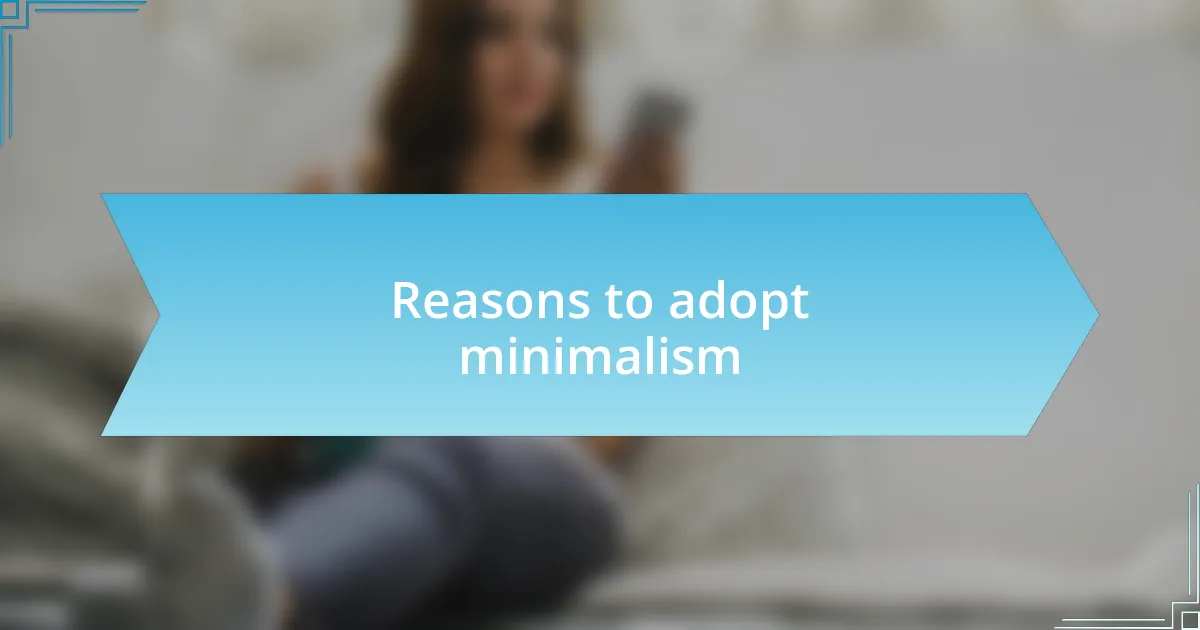
Reasons to adopt minimalism
Adopting a minimalist lifestyle can significantly enhance your mental clarity and emotional well-being. I remember the day I decluttered my home office; the moment the chaos of paperwork vanished, it felt like a weight lifted off my shoulders. Suddenly, I could think more clearly and focus on what truly mattered, like pursuing my passions and spending quality time with loved ones.
Another compelling reason to embrace minimalism is its impact on financial health. By consciously choosing fewer but higher-quality items, I learned to allocate my resources more wisely. This shift in mindset not only reduced impulsive spending but also increased my savings, allowing me to invest in experiences rather than things.
Lastly, minimalism fosters a deeper connection with the environment. I became mindful of my consumption habits, realizing how much excess packaging and waste I contributed to. Now, I find joy in making sustainable choices, like shopping secondhand or creating a capsule wardrobe, which also aligns with my values and nurtures a sense of purpose.
| Reason | Benefit |
|---|---|
| Mental Clarity | Less clutter leads to clearer thinking and emotional freedom. |
| Financial Health | Conscious spending promotes savings and financial stability. |
| Environmental Awareness | Sustainable choices foster a sense of purpose and connection to nature. |
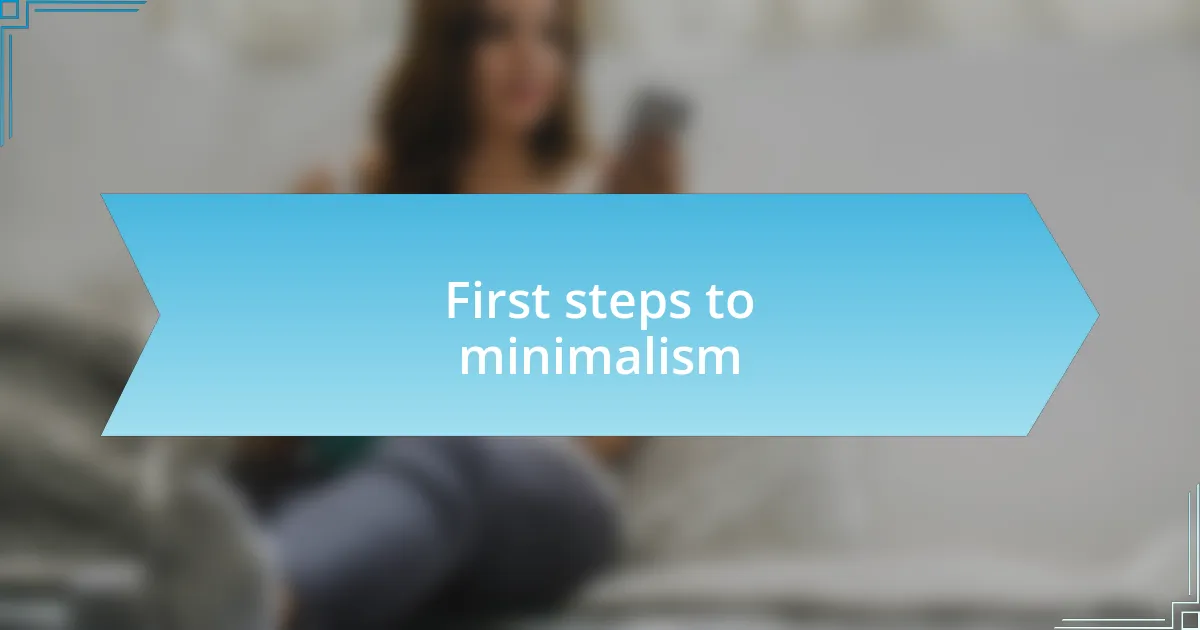
First steps to minimalism
Starting my journey toward minimalism was both exciting and a bit overwhelming. I remember standing in my living room, surrounded by items that held memories but no practical purpose. The first step I took was to identify what truly mattered to me. I started by asking myself, “What sparks joy?” This simple question became my guiding principle as I tackled one area at a time.
Here’s a straightforward approach to get started:
- Declutter: Go through your belongings and separate items into categories: keep, donate, and discard.
- Set a timeline: Allocate specific times in your week to work on different rooms or spaces.
- Explore your values: Reflect on what is important to you, helping to guide your choices in what to keep.
- Limit future purchases: Before buying something new, pause and consider if it aligns with your minimalism goals.
- Start small: Choose a small area, like a drawer or a shelf, to avoid feeling overwhelmed.
Each of these steps helped me embrace a mindset shift, and I could feel the tension beginning to melt away. The more I decluttered, the lighter I felt—not just in my space, but emotionally. It’s empowering to create a home that reflects who I am and what I truly cherish.
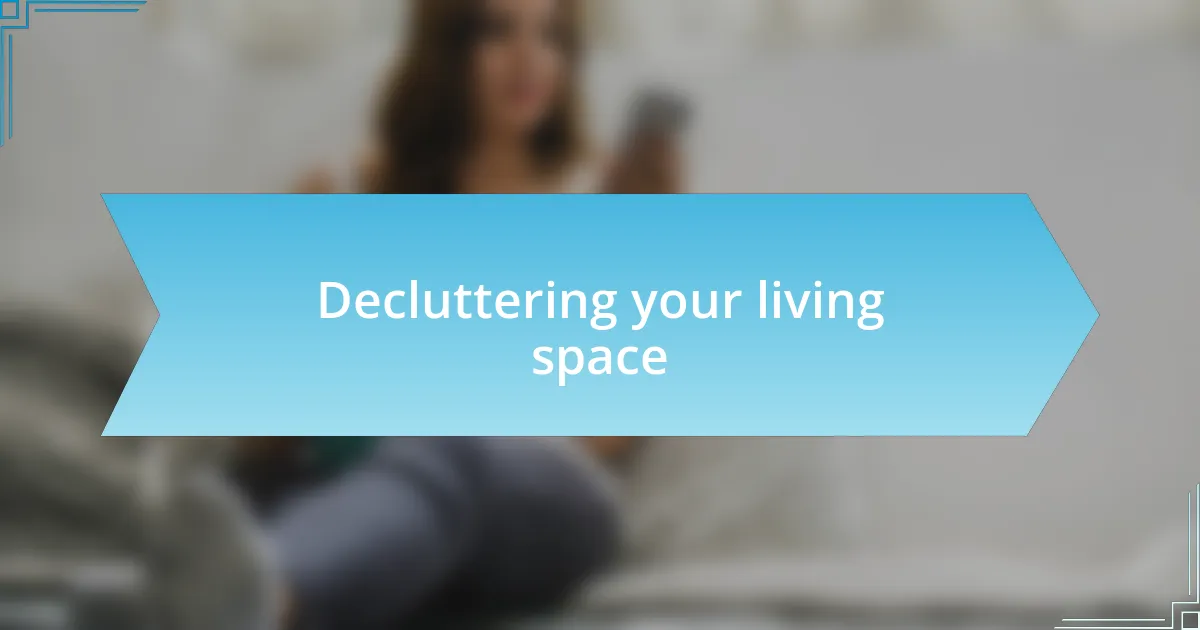
Decluttering your living space
When I began decluttering my living space, I was surprised by how much I clung to items I no longer used. I remember the moment I opened my closet and found clothes with tags still on them—it hit me that these pieces didn’t represent my current self. I had to ask myself, “Am I holding on to this because I love it or because I feel guilty about letting it go?” That realization was a game-changer.
Tackling one room at a time became my mantra. I found that the kitchen was a great starting point; it’s a space I use every day. It felt astonishing to toss out old utensils and mismatched cups that had cluttered my drawers for years. Each item I let go of created a sense of freedom, like finding a breath of fresh air in a stuffy room. I highly encourage you to celebrate small victories during this process; they keep you motivated and remind you that less truly can be more.
One particular memory stands out: clearing out my bookshelves. Each book represented a moment in my life, but I realized many were gathering dust, unloved. As I carefully sifted through, I felt lighter with every book I decided to donate. It’s funny how such a simple act can stir up emotions, making you realize that it’s not just about the objects but also about the space they occupy in your heart and mind. Isn’t it fascinating how decluttering can lead to both physical and emotional clarity?
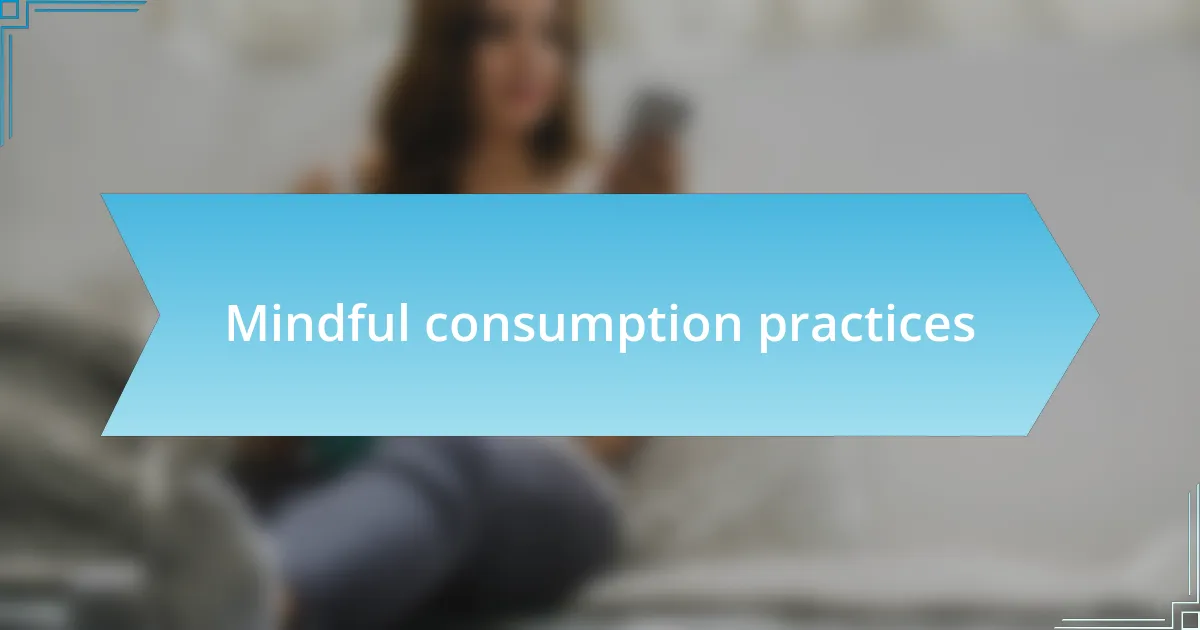
Mindful consumption practices
Mindful consumption practices start with a fundamental shift in perspective. I recall a time when shopping felt almost automatic, a routine to fill an emotional void. Now, I pause before any purchase, asking myself, “Will this item genuinely enhance my life or just add to the clutter?” That simple internal dialogue has transformed my approach to shopping, allowing me to focus on quality over quantity.
One experience that truly shaped my journey was when I decided to curate a capsule wardrobe. I remember the thrill of selecting a few timeless pieces that I absolutely loved. Each item not only fit beautifully but also held significance, like the blazer I wore for my first job interview. This intentionality in my choices made getting dressed feel more like a creative expression than a chore. Have you ever noticed how liberating it feels to open your closet and find only what you truly adore?
Furthermore, I’ve learned to embrace the concept of “buying less, but buying better.” This practice has not only reduced impulse buying but also encouraged me to research brands that align with my values, such as sustainability and ethical production. I still remember the satisfaction of purchasing a handcrafted item from a local artisan instead of a mass-produced alternative. Each mindful purchase felt like a vote for the kind of world I want to support—one that prioritizes authenticity and mindfulness over relentless consumerism.
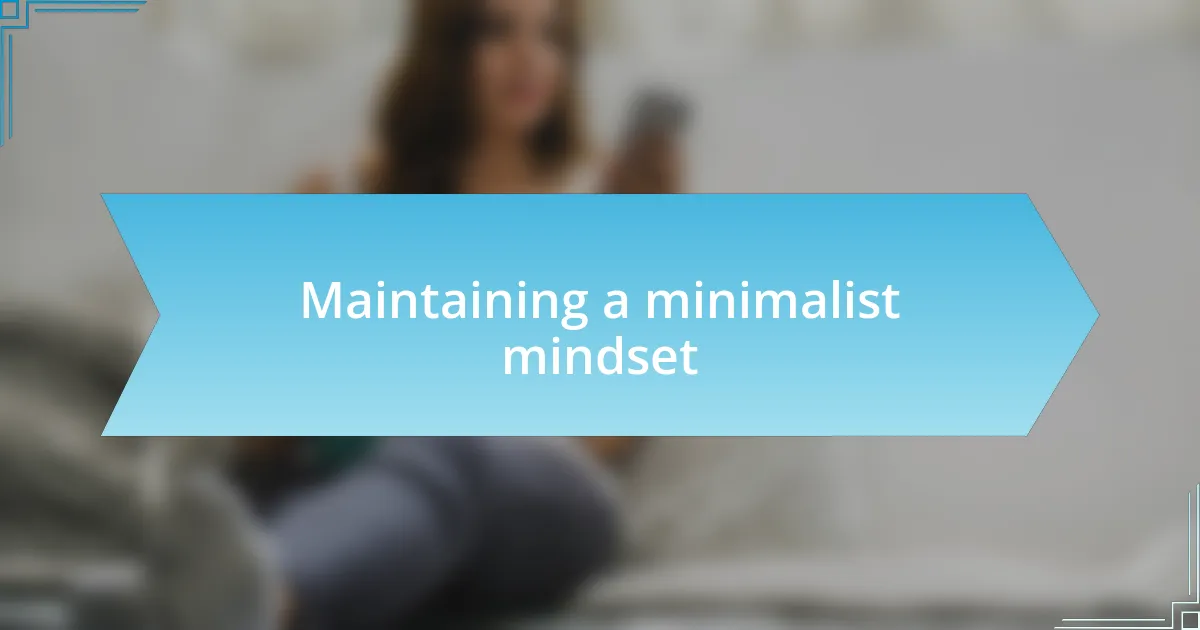
Maintaining a minimalist mindset
To maintain a minimalist mindset, I’ve found it essential to regularly assess my surroundings and habits. For instance, I revisit my living space every few months, reflecting on what still serves a purpose and what has become superfluous. Realizing that our environment impacts our mental clarity, I ask myself, “Does this bring me joy or peace, or is it just another object taking up space?”
A critical part of this journey is embracing the notion that emotions can drive unnecessary attachments. I noticed this during a recent clean-out of my home office. I stumbled upon birthday cards and knickknacks that once held sentimental value but now felt burdensome. It was a bittersweet moment, yet liberating to understand that memories live within us, not just in the physical items we cling to. Have you ever let go of something that felt heavy only to realize it was freeing?
Additionally, I practice daily mindfulness techniques to keep my minimalist mindset sharp. Meditation has become a cornerstone of my routine, allowing me to center myself amid life’s distractions. I often ponder the question, “What truly matters?” This reflective practice helps me prioritize experiences and relationships over material possessions, nurturing a profound sense of fulfillment that no object ever could.
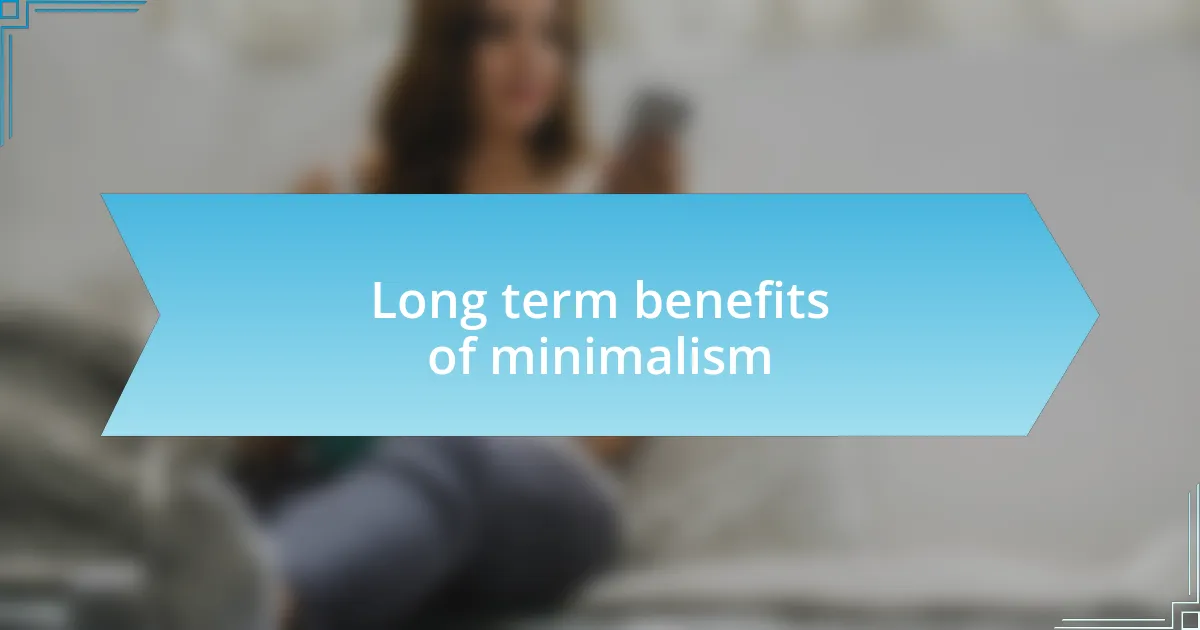
Long term benefits of minimalism
Embracing minimalism has led to significant long-term benefits in my life, one being the reduction of stress and anxiety. By simplifying my environment, I’ve created a space that promotes calmness rather than chaos. Have you ever walked into a cluttered room and felt an immediate sense of overwhelm? I can certainly relate. When I decluttered my workspace, I noticed how much easier it was to concentrate and feel at ease.
Another profound benefit I’ve experienced is financial freedom. Adopting a minimalist lifestyle means being intentional with my purchases. I recall a time when I would impulsively buy trendy items, only to feel guilty later for the money wasted. Now, I approach buying with a well-considered mindset, often asking myself if an item truly adds value to my life. This shift not only saved me money but also lifted a weight off my shoulders.
Lastly, minimalism cultivates rich, meaningful relationships. As I’ve let go of material attachments, I’ve found myself investing more time in experiences with loved ones. Instead of hosting parties centered around lavish decorations or products, I invite friends for simple, heartfelt gatherings. The laughter and connection we share are far more fulfilling than any material possession could offer. So, what matters more to you: the things you own or the moments you create with others?



